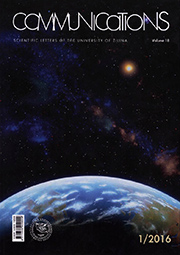A Black-Box Analysis of the Extent of Time-Scale Modification Introduced by WEBRTC Adaptive Jitter Buffer and its Impact on Listening Speech Quality
A Black-Box Analysis of the Extent of Time-Scale Modification Introduced by WEBRTC Adaptive Jitter Buffer and its Impact on Listening Speech Quality
Author(s): Yusuf Çınar, Hugh Melvin, Peter PočtaSubject(s): Communication studies, ICT Information and Communications Technologies
Published by: Žilinská univerzita v Žilině
Keywords: WebRTC; jitter; adaptive playout; time-scale modification;
Summary/Abstract: WebRTC is an open-source platform for real-time communications over the web and has been experiencing widespread adoption in recent years. WebRTC clients employ the technique of time scaling of packets to cope with the impact of network jitter and/or clock skew. A black-box study presented in this paper focuses on two aspects, namely time scale modification behaviour under different packet arrival interval and its impact on the listening quality perceived by the end user. Specifically, we examine the MOS scores predicted by the POLQA speech quality prediction model. Our tests involve both iSAC and Opus codecs, two of the widely used WebRTC codecs. In the experiment, a speech file played from one client, is directed through a network simulation before reaching the receiving client. Our results surprisingly show that the extent of time scaling is consistently higher for Opus producing shorter speech files. Regarding the consequent impact on quality, we also find that there are many cases where POLQA is reporting MOS predictions that contradict expert listener assessments.
Journal: Komunikácie - vedecké listy Žilinskej univerzity v Žiline
- Issue Year: 18/2016
- Issue No: 1
- Page Range: 17-22
- Page Count: 6
- Language: English

